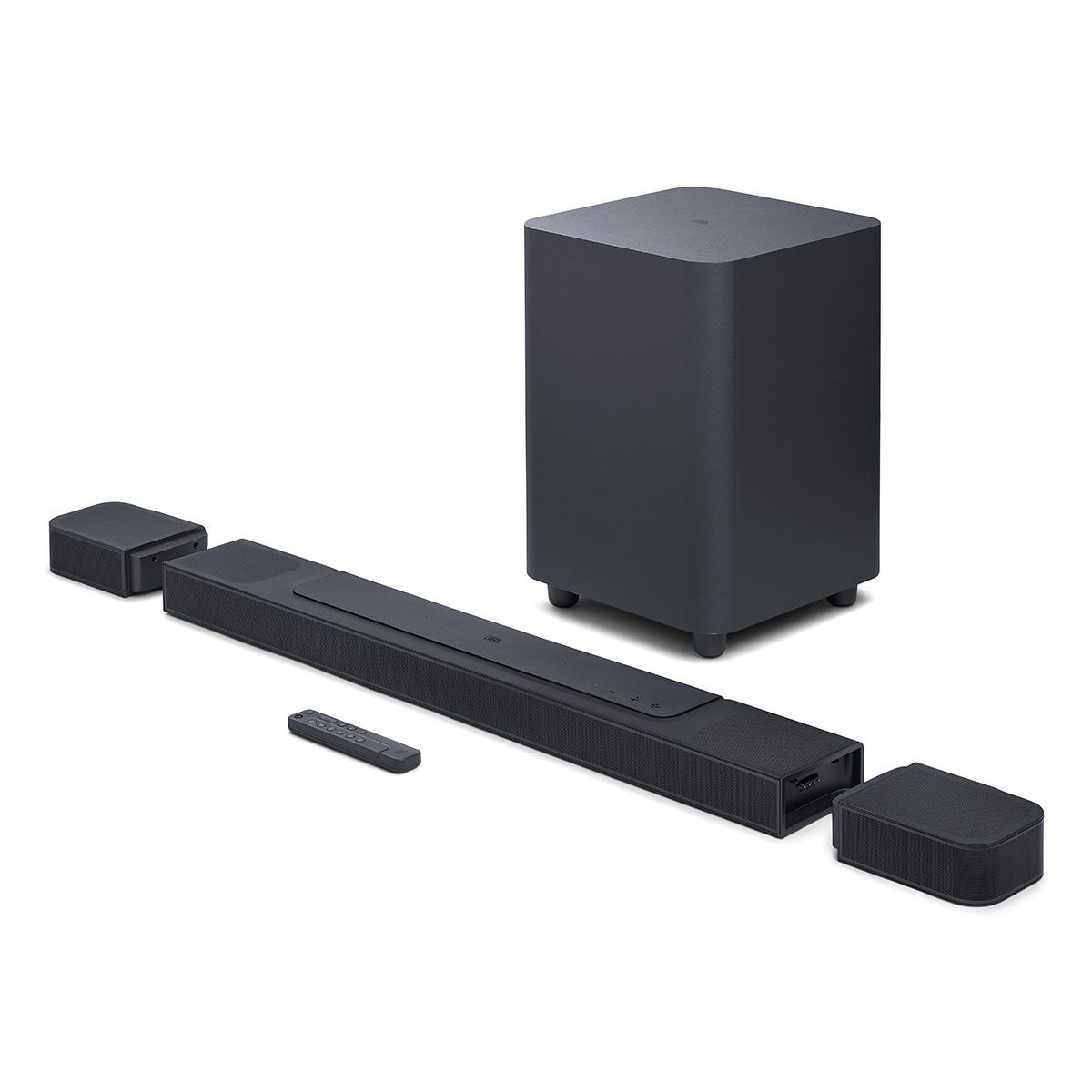
When it comes to upgrading your TV's sound, soundbars have become the go-to solution for most people. Today, we'll compare two popular but very different options: the premium JBL Bar 1000 ($1,139.95) and the budget-friendly Samsung B-Series 5.1 ($277.99).
Soundbars have come a long way from simple stereo speakers. Today's systems can create immersive surround sound experiences that rival traditional multi-speaker setups, but with much easier installation. The key difference between models often comes down to how they achieve this surround effect - through actual speakers or digital processing.
When you see numbers like 5.1 or 7.1.4, here's what they mean:
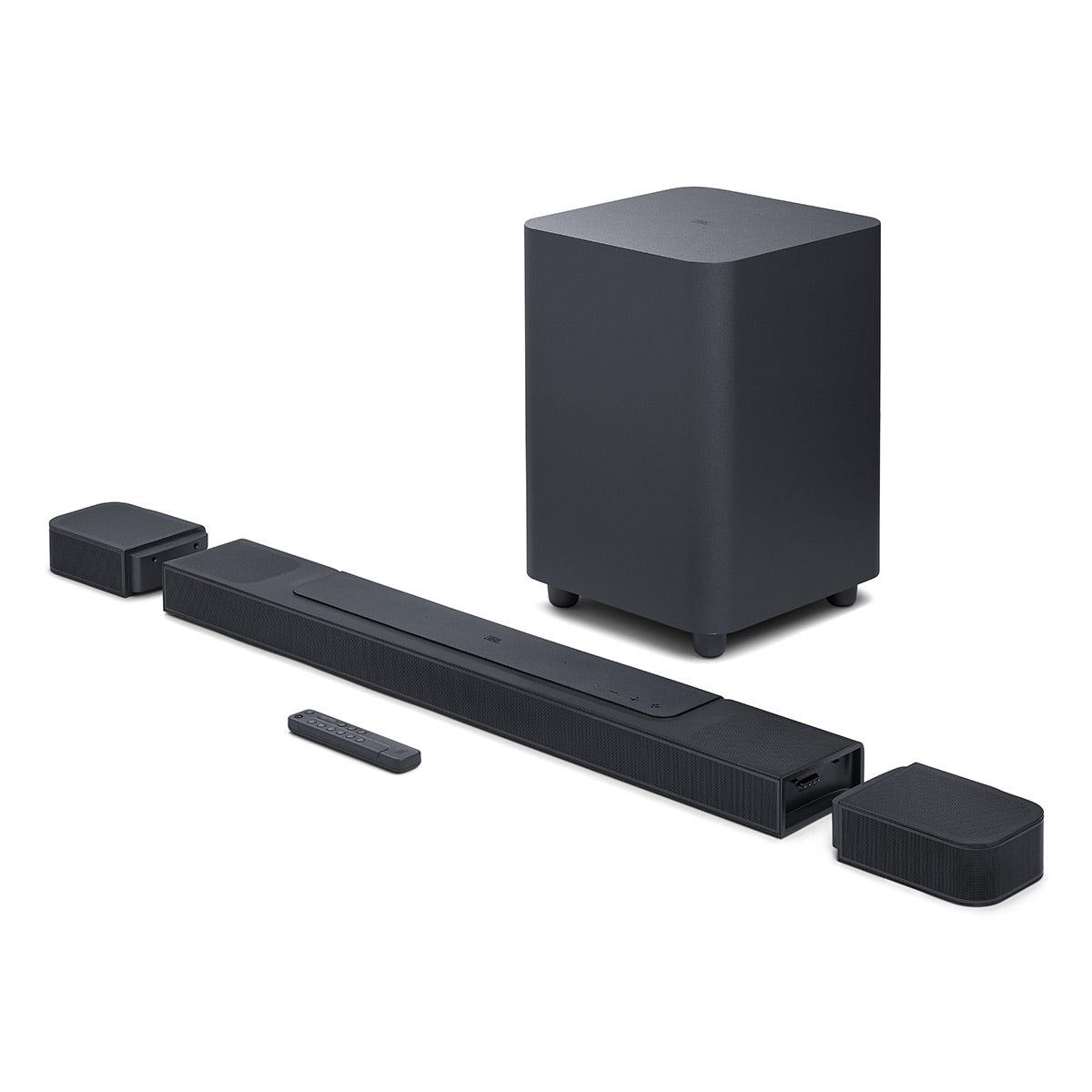
The JBL Bar 1000 is a 7.1.4 system, meaning it has seven main channels, one subwoofer, and four upward-firing speakers for height effects. The Samsung B-Series is a 5.1 system with five main channels and one subwoofer.
The JBL Bar 1000, released in late 2022, represents the current state-of-the-art in soundbar technology. It creates true 3D sound using physical speakers, including four upward-firing drivers that bounce sound off your ceiling to simulate overhead effects. This isn't just marketing - in testing, you can actually hear rain or helicopter sounds from above, which adds incredible immersion to movies and games.
The Samsung B-Series, a 2024 model, takes a different approach. It uses digital processing (called DTS Virtual:X) to simulate surround sound from fewer speakers. While this works surprisingly well for casual viewing, it can't match the precise positioning and immersion of physical speakers.
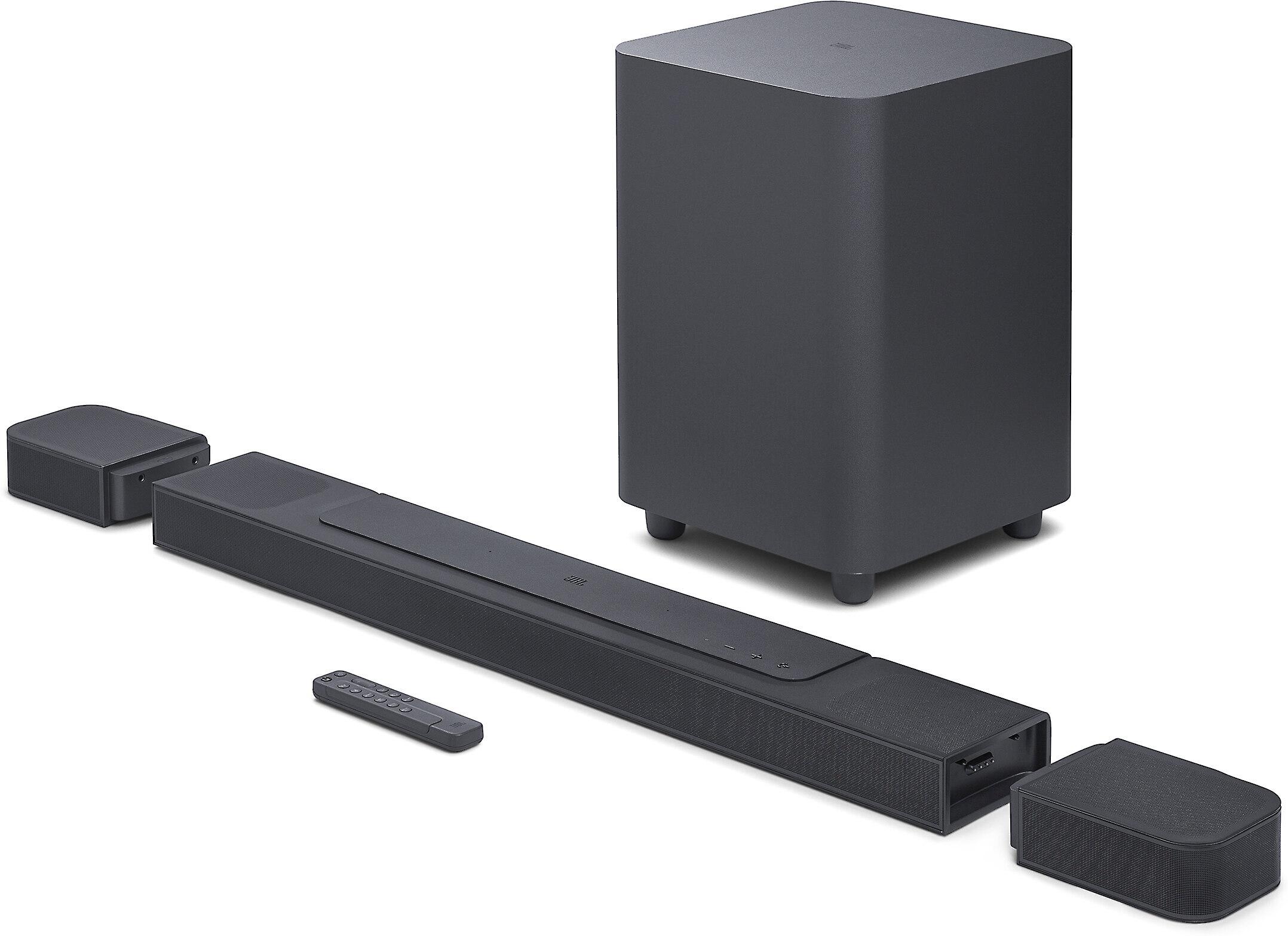
Bass performance is another major differentiator. The JBL's 10-inch wireless subwoofer delivers deeper, more controlled bass that you can feel during movie explosions or music. The Samsung's smaller subwoofer is adequate for TV viewing but won't shake your room during action scenes.
Having tested both systems, the difference in immersion is noticeable but context-dependent:
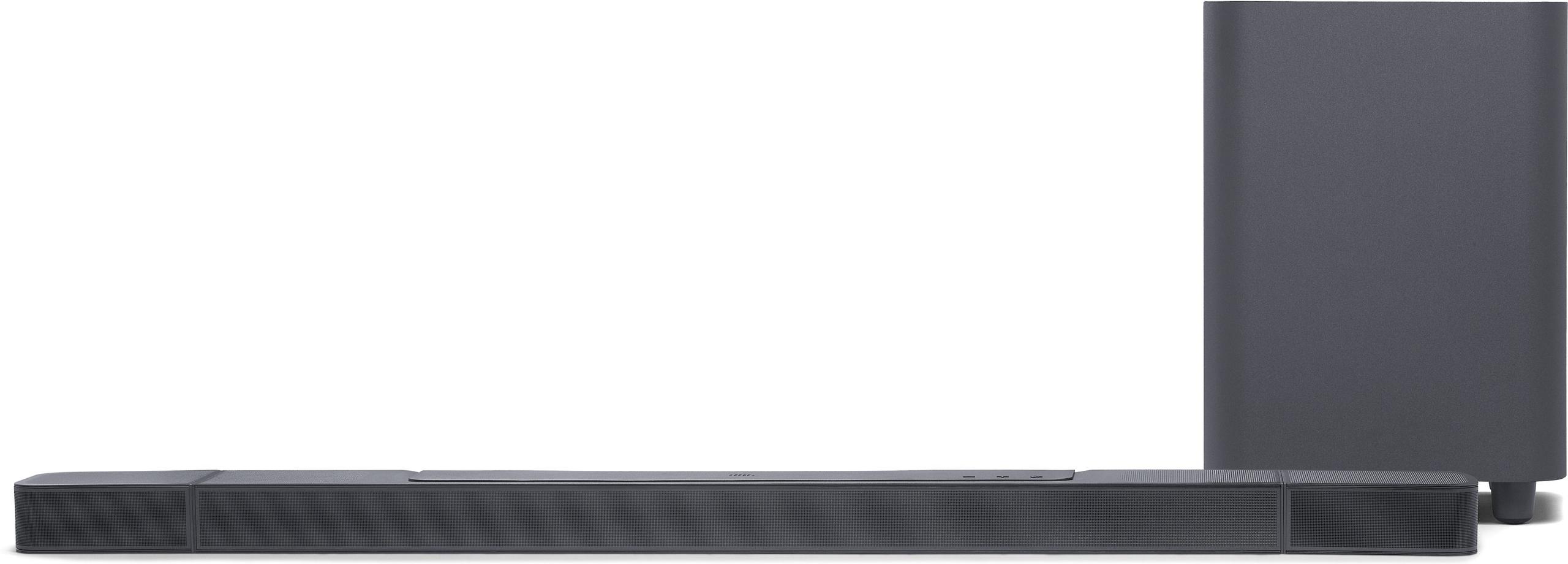
The JBL Bar 1000 supports both Dolby Atmos and DTS:X, the latest surround sound formats. These formats provide precise 3D audio positioning, which the system can actually reproduce thanks to its physical speaker array.
The Samsung B-Series supports virtual surround through DTS Virtual:X, which uses clever audio processing to simulate surround effects from fewer speakers. While not as precise, it's an impressive technology for the price.
Both systems offer:
The JBL adds:
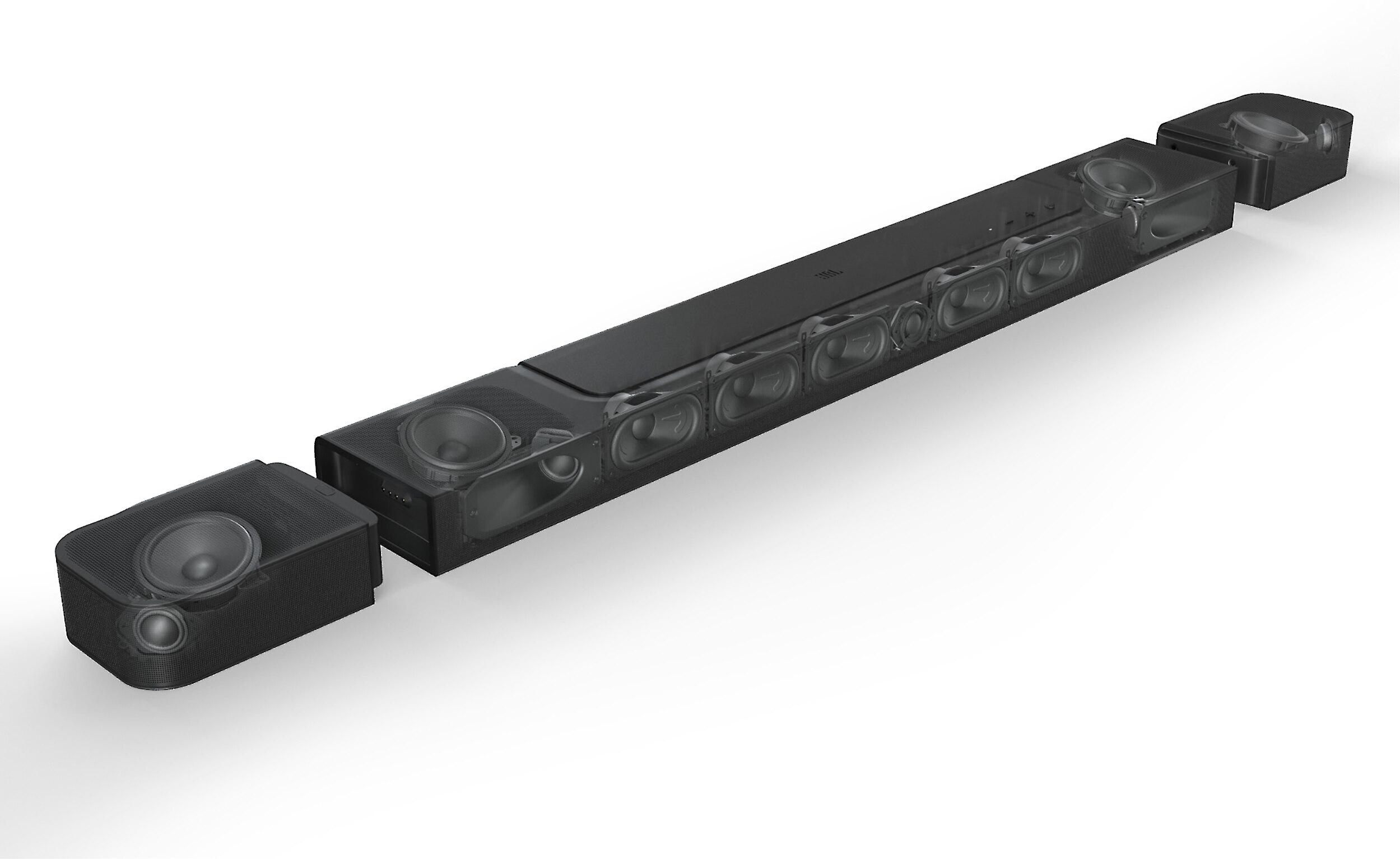
The Samsung system is essentially plug-and-play - connect two power cords and one HDMI cable, and you're done. The JBL requires more setup time, including room calibration and positioning the detachable rear speakers. However, this extra effort results in better sound optimization for your specific room.
The price difference between these systems is substantial - you could buy four Samsung B-Series for the cost of one JBL Bar 1000. But value depends on your needs:
Consider these factors when choosing:
The JBL Bar 1000 and Samsung B-Series represent opposite ends of the soundbar spectrum. The JBL offers a premium home theater experience with true surround sound, while the Samsung provides a significant upgrade from TV speakers at a budget-friendly price.
For movie enthusiasts with the budget, the JBL Bar 1000's superior sound quality and true Dolby Atmos support make it the clear choice. However, if you're primarily watching regular TV content or want a simple sound upgrade without breaking the bank, the Samsung B-Series delivers impressive performance for the price.
Remember, the best soundbar is the one that fits your space, budget, and listening habits. Both of these options excel in their intended use cases - they just serve different audiences with different needs.
| JBL Bar 1000 ($1,139.95) | Samsung B-Series 5.1 ($277.99) |
|---|---|
| Channel Configuration - Determines how precise and immersive the sound can be | |
| 7.1.4 (true surround with height channels) | 5.1 (basic surround) |
| Subwoofer Size - Larger means deeper, more impactful bass | |
| 10" wireless subwoofer (cinema-quality bass) | 6.5" wireless subwoofer (adequate for TV) |
| Surround Technology - Affects how realistic the 3D sound feels | |
| True Dolby Atmos & DTS:X with physical speakers | Virtual surround via DTS Virtual:X |
| Rear Speakers - Critical for true surround sound experience | |
| Detachable wireless with 10hr battery life | None included (optional wired purchase) |
| Total System Power - Higher power means better performance in larger rooms | |
| 880W (fills large rooms easily) | 430W (good for small/medium rooms) |
| Advanced Features - Extra capabilities that enhance usability | |
| Wi-Fi streaming, room calibration, voice enhancement | Basic Bluetooth, TV sync features |
| Setup Complexity - Consider your comfort with audio equipment | |
| Moderate (requires calibration, speaker placement) | Simple (plug-and-play) |
| Room Size Sweet Spot - Matching system to space is important | |
| 15x20ft or larger rooms (scales well) | Best for rooms under 15x15ft |
The JBL Bar 1000 ($1,139.95) is significantly better for movies due to its true Dolby Atmos support, physical rear speakers, and powerful 10" subwoofer. The Samsung B-Series ($277.99) is adequate for casual movie watching but won't deliver the same immersive experience.
If you're serious about home theater, yes. The JBL Bar 1000 offers genuine surround sound, better bass, and superior audio processing. However, if you're just looking to improve TV sound, the Samsung B-Series provides good value.
The Samsung B-Series is more suitable for apartments due to its compact size, simpler setup, and lower bass output that won't disturb neighbors. The JBL Bar 1000 might be overkill for small spaces.
For a true home theater experience, Dolby Atmos makes a significant difference. The JBL Bar 1000 provides real Atmos with upward-firing speakers, while the Samsung B-Series only offers virtual surround.
The JBL Bar 1000 with its 10" subwoofer delivers notably deeper and more powerful bass compared to the Samsung B-Series' smaller subwoofer.
Yes, both the JBL Bar 1000 and Samsung B-Series are compatible with any modern TV through HDMI ARC or optical connections.
The Samsung B-Series offers simpler plug-and-play setup, while the JBL Bar 1000 requires more time for optimization and rear speaker placement.
For true surround sound, yes. The JBL Bar 1000 includes detachable wireless rear speakers, while the Samsung B-Series simulates surround from the front.
The JBL Bar 1000 offers superior music playback with Wi-Fi streaming and better stereo separation, though the Samsung B-Series is fine for casual listening via Bluetooth.
The JBL Bar 1000 excels in rooms 15x20ft or larger, while the Samsung B-Series is ideal for rooms under 15x15ft.
Both will work, but the JBL Bar 1000 provides better gaming immersion with true Dolby Atmos and more precise sound positioning than the Samsung B-Series.
Both perform well, but the JBL Bar 1000 offers superior dialogue enhancement technology and a dedicated center channel compared to the Samsung B-Series.
We've done our best to create useful and informative comparisons to help you decide what product to buy. Our research uses advanced automated methods to create this comparison and perfection is not possible - please contact us for corrections or questions. These are the sites we've researched in the creation of this article: zdnet.com - jbl.com - jbl.com - pcrichard.com - rtings.com - d21buns5ku92am.cloudfront.net - ro.harmanaudio.com - target.com - harmanaudio.com - dell.com - mm.jbl.com - dolby.com - jbl.com.my - videoandaudiocenter.com - bestbuy.com - abt.com - avsforum.com - crutchfield.com - camelcamelcamel.com - samsung.com - samsung.com - samsung.com - images.samsung.com - samsung.com - avblinq.avbportal.com - samsung.com - samsung.com